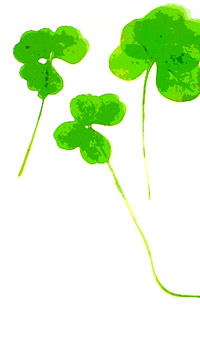 Every year on March 17th many “Irish Eyes Are Smiling,” as people of Irish descent – and others who claim to be Irish—celebrate Saint Patrick’s Day. It is a day to make merry with singing, dancing, drinking and, of course, eating the traditional feast of corned beef and cabbage.
Every year on March 17th many “Irish Eyes Are Smiling,” as people of Irish descent – and others who claim to be Irish—celebrate Saint Patrick’s Day. It is a day to make merry with singing, dancing, drinking and, of course, eating the traditional feast of corned beef and cabbage.
Saint Patrick’s Day
Saint Patrick (circa 385-461) is one of the most famous patron saints of Ireland. Mythology credits him with banishing snakes from the island of Ireland. And legend also credits Patrick with teaching the Irish about the concept of the Trinity by showing people the shamrock, a three-leaf clover, using it to highlight the Christian dogma of “three divine persons in the one God.” Saint Patrick’s feast day is a holy day of obligation for Roman Catholics in Ireland. The celebration of this holiday is not confined to Ireland but is also observed in many countries around the world. In the United States it is widely celebrated but is not an official national holiday.
Origins of Celtic Music
Music is an important part of celebrating Saint Patrick’s Day, along with the frivolity, fun, good cheer, feasting and drinking. Not just any kind of music, but traditional Celtic and Irish music specifically. Celtic music is the traditional music of Ireland, Scotland, Wales and Brittany.
Traditional Irish music traces its roots to a genre of folk music of various regions of Ireland. Traditional music is widely played in both urban and rural communities. The Irish music of today sounds very similar to what was heard over 200 years ago and not much has changed through the decades. Much of this music is designed for dancing hence it is more instrumental in character.
Renewed interest in Irish music was coincidental with the Irish nationalistic movement of the late 19th Century. Another revival came about with the American folk music interest in the late 1960’s.
A discussion of Celtic music would not be complete without mentioning Scottish traditional music. The music of Scotland has many unique and traditional phases that are still alive and well today.
Instruments
The instrumentation of early Celtic and Irish music has not changed a great deal over the centuries. Instruments, however, have been added to the original set of harp, bagpipe and fiddle.
The Irish Harp, invented in Ireland, became their national instrument. It is smaller than the large harps we see today. The harp, that is common in all Celtic areas, is used both as a solo instrument and for accompaniment.
Bagpipes are a staple in Celtic societies. The pipes are of different construction in Scotland, Ireland and Brittany.
The fiddle, or violin, is a newer member of a traditional Celtic ensemble. It was added in the late 17th Century and is to this day a mainstay. Scottish fiddling became very popular in the 18th Century and is ever present in modern times as evidenced by many fiddling contests. This type of fiddling influenced much of American folk music, especially in Appalachia. Other instruments used in traditional ensembles may include: wooden flute, tin whistle, accordion or concertina, guitar, banjo and bouzouki, a large mandolin.
It is said there are more people of Irish descent in America than in Ireland and Irish music and merriment on Saint Patrick’s Day is widely celebrated throughout the states but none more so than in New York City. Every year for 247 years New Yorkers have marched in the Saint Patrick’s Day Parade. New Yorkers have their own unique way of celebrating Saint Patrick’s Day. The “Wearing of the Green,” green clothes, green flowers, and green hats are standard, but you’ll also find unique green beers, green bagels, green water fountains, and even a green Empire State Building.
So here’s to a great celebration in 2010, with lots of food, fun and good Irish music.
Erin Go Bragh! Ireland Forever!
The Danville Community Band will present “Wine, Women & Song,” at their traditional gala dinner concert, Blackhawk Country Club, Sunday, April 25, 2010. Call for reservations 925-736-6500.
Please submit your questions and comments to banddirector01@comcast.net.
Visit our website at www.danvilleband.org for up-to-date information about the Danville Community Band.